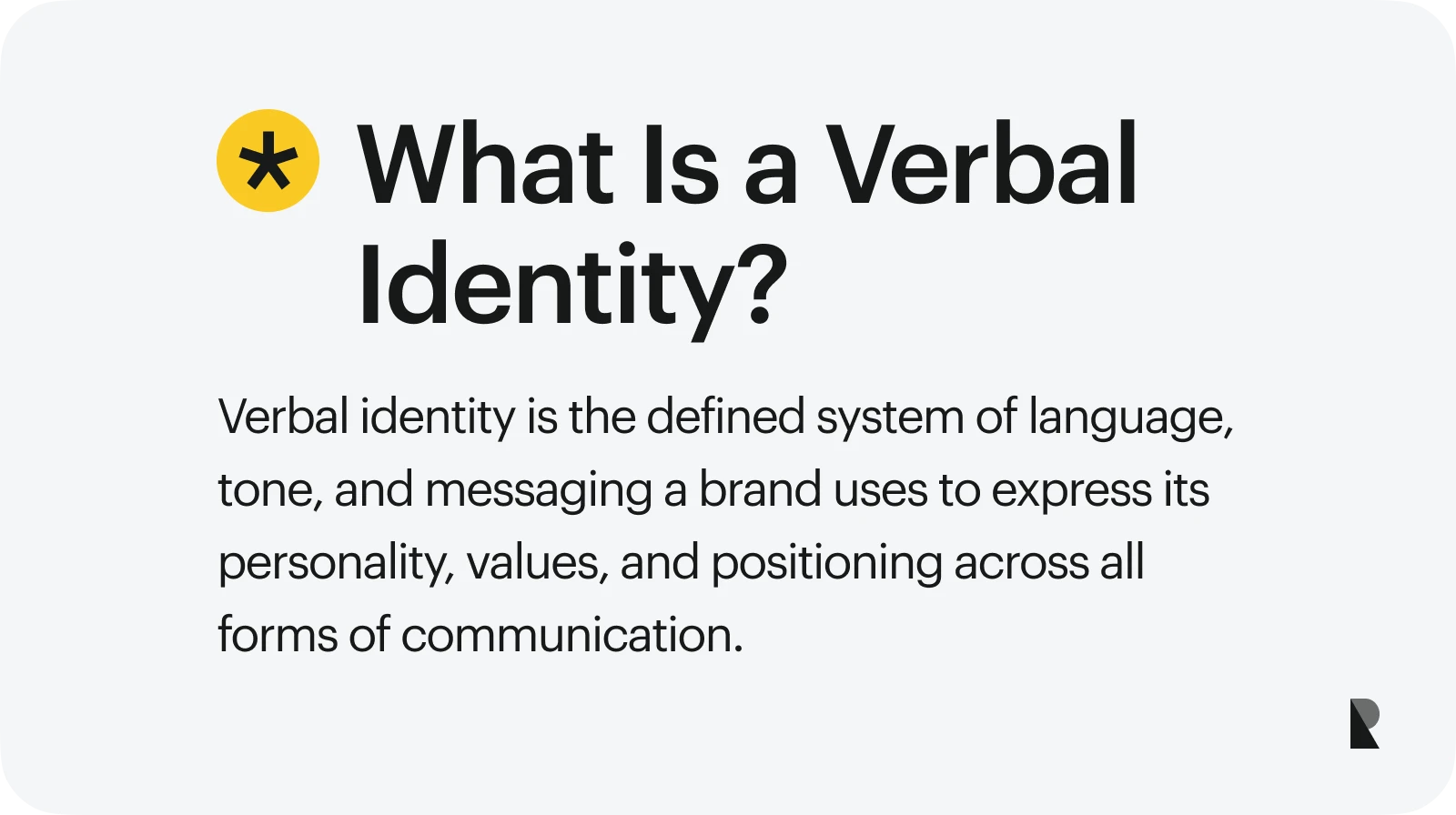
Visual identity is just the tip of the iceberg regarding branding. While what people see is crucial to making a first and lasting impression, how you sound is just as critical. That’s why many brands work with brand agencies to help them build unique verbal identities.
If you want to learn the basics of verbal identity, read on as we explore strategies, examples, and key components to give you a strong start.
Defining Verbal Identity
Verbal identity is the brand expression of its identity through language. It encompasses the tone of voice, messaging, and narrative. Imagine a financial bank adopting the jolly tone of brands like McDonald's. The incongruity can be jarring and confuse customers. A brand's verbal identity should feel genuine and consistent with the company's personality.
Partnering with a brand identity creative agency allows companies to codify their tone and messaging into a living system. These agencies bring research, linguistic expertise, and creative discipline to build voices that sound authentic and drive engagement and long-term loyalty.
Why Your Brand Needs a Verbal Identity?
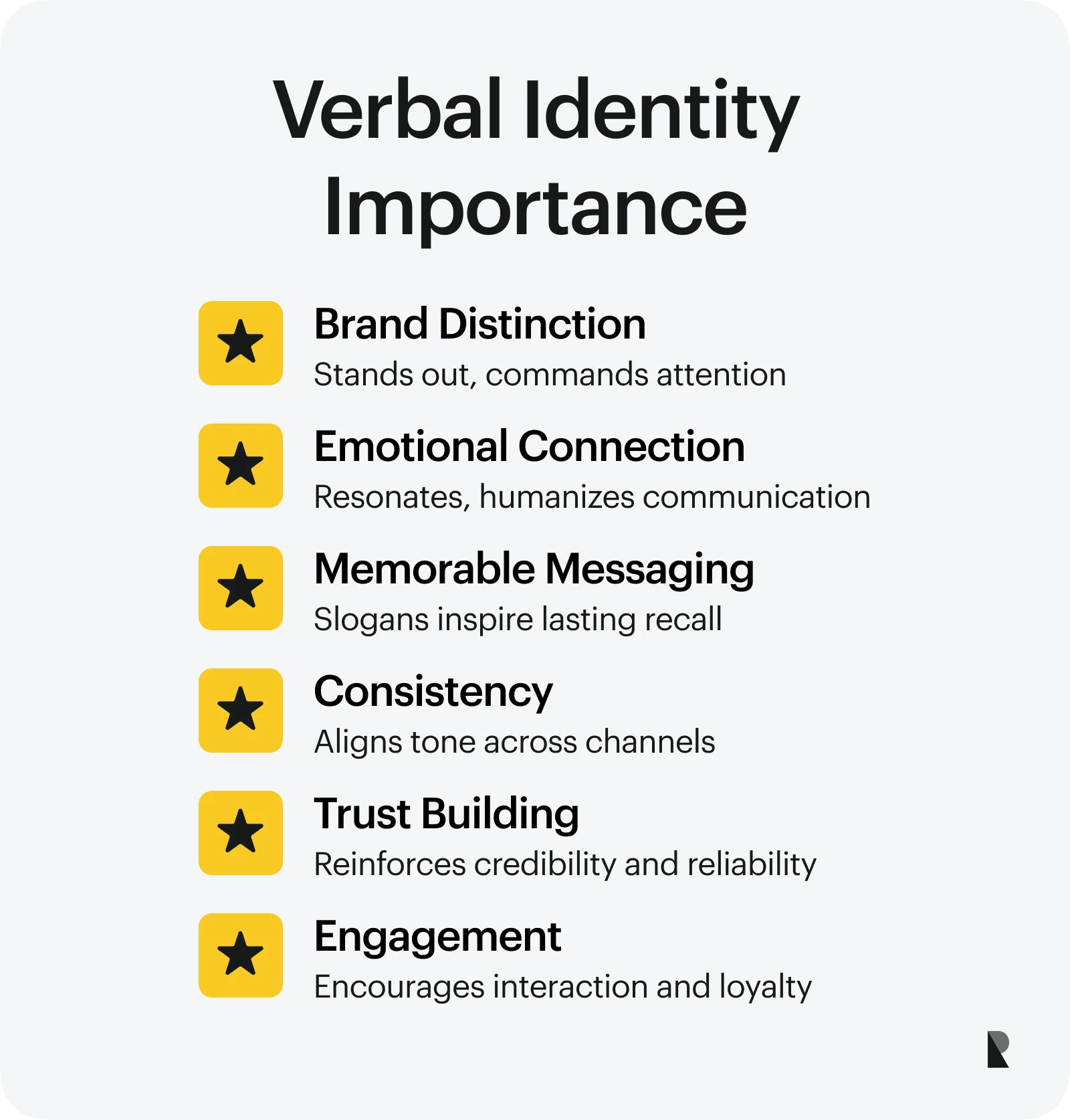
A strong verbal identity beyond just having a good voice. Let's explore its key benefits to brands below.
Makes brands more distinct
A powerful verbal brand identity can command attention and convince your audience, helping you establish your brand. It makes you different from your competitors.
For example, Nike's "Just Do It" slogan is short, motivational, and memorable. It packs a punch, inspiring people to believe in themselves and pursue their goals. This positive verbal identity affects how people perceive the brand.
Strengthens brand connection
Establishing a verbal identity can help you create content that resonates with your audience. This is especially true when you have a humanized brand voice, making people more likely to engage with you.
Beauty brand Glossier relates to its audience by listening to their personal stories. It uses their actual words through user-generated content, enabling them to speak like their customers, thereby increasing brand resonance.
Key Components of a Strong Verbal Identity
Crafting a strong verbal identity is a complex process. Read on as we explore each key component that brands should consider. We also take a closer look at global brands with successful verbal identities.
1. Brand personality
Brand personality is a collection of traits that best describe a brand if it were a person. Among the brands with well-defined personalities is Red Bull, known for its adventurous and high-energy personality that celebrates the thrill of extreme sports and daring experiences. It follows that Red Bull's verbal identity centers around bold and action-oriented language, evident in its slogan, "Red Bull Gives You Wings."

Action-oriented verbal identity via Red Bull
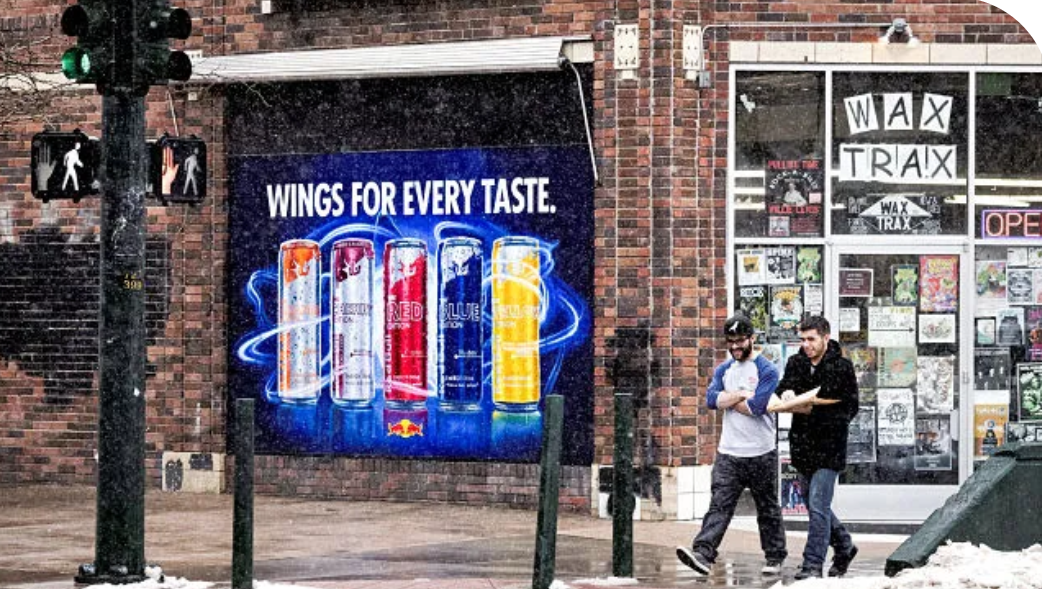
Outdoor ad for Red Bull via AdWeek
The alignment between Red Bull's brand personality and verbal identity enhances resonance and brand recognition.
2. Tone of voice
It's not what you say; it's how you say it. That's precisely why having the right tone of voice matters when building brands.
Brand tone refers to how brands convey their messages. Happy, uplifting, humorous, and bold are just a few that can effectively evoke feelings, making people more receptive to what you say.
Tones vary depending on context. For example, you may use a more professional tone when writing an email than when posting on social media. Different tones also reflect brands' personalities, making it easier for consumers to understand and relate to them.
Wendy's is among the brands known for its humorous and snarky posts that cut through the noise. In 1984, the "Where's the Beef?" campaign took a swipe at other brands while highlighting the quality of burgers Wendy's sells.
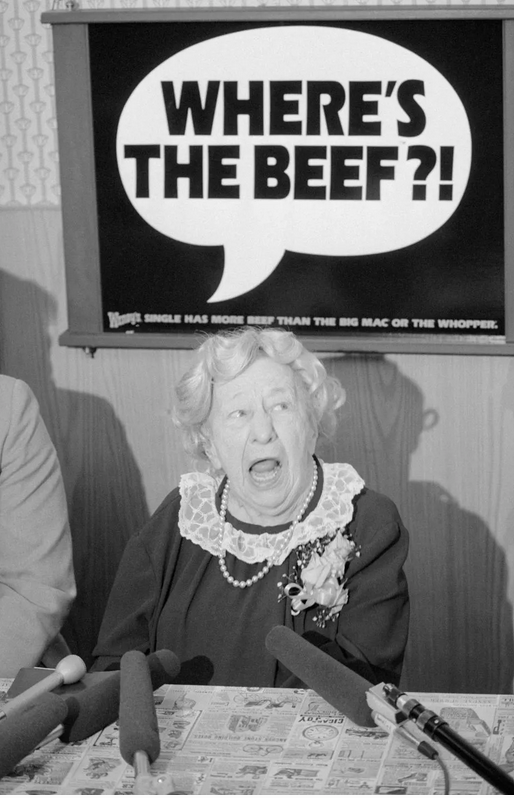
Wendy’s made a mark with its ‘Where’s the Beef?’ campaign. Image via Forbes
The brand has also gone viral with its roasts on X (formerly Twitter), teasing its competitors while leaving its audience entertained. This strategy garnered Wendy's millions of followers on social media, including those of other competing brands.

Wendy’s eggs on McDonald’s via X
3. Rhythm and pace
Rhythm refers to the cadence and flow of your language, while the pace is the speed at which you deliver your message. Using a mix of short and long sentences can create a more dynamic and engaging verbal brand identity.
For example, luxury cosmetics brand Aesop maintains a calm, unhurried rhythm and pace in its communications. This relaxed style aligns perfectly with the brand's sophisticated and sensual aesthetic, conveying a sense of trust.
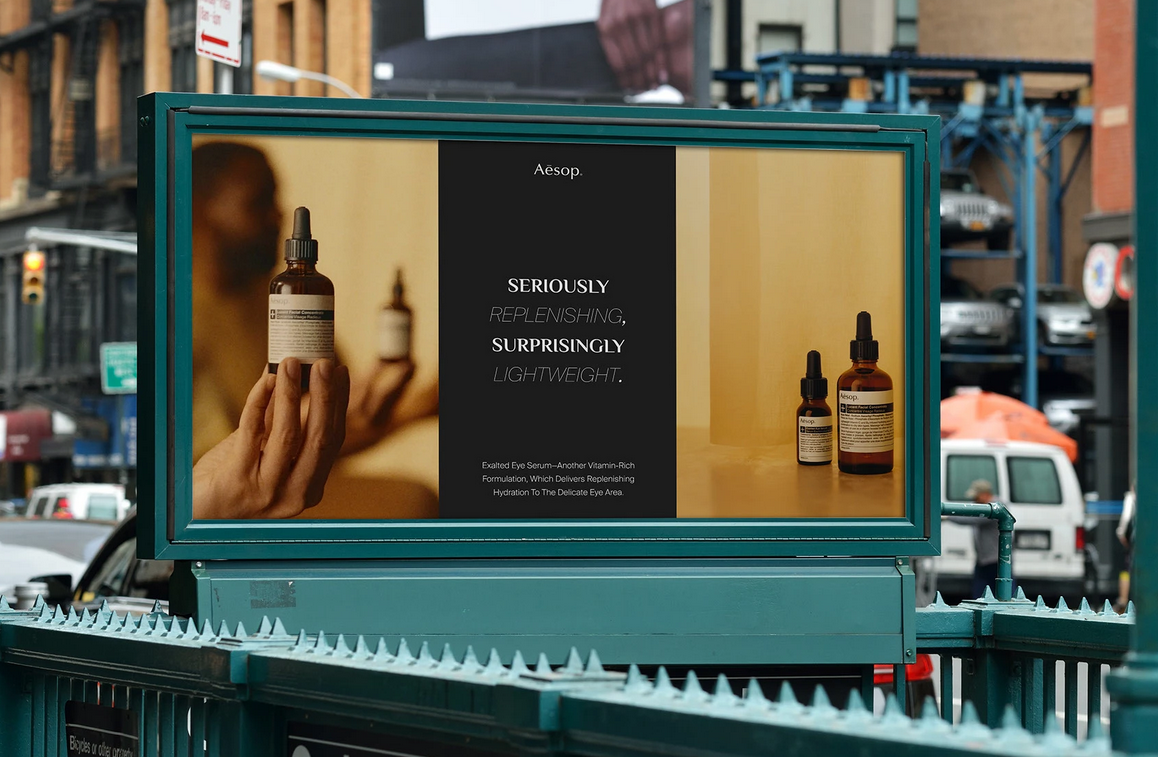
Aesop keeps its customers intrigued by using words that appeal to the senses. Image via Behance
4. Lexical choices (vocabulary and syntax)
Words, slang, and phrases unique to brands help them stand out and stick in people's minds.
Starbucks created a new coffee vernacular with terms like 'venti' and 'grande.' They have also coined the popular 'Frappuccino' drink. Lush Cosmetics has developed distinctive product names, like 'Shower Jellies' and 'Bath Bombs.'

Starbucks started a new trend with its coffee size terms. Image via Unsplash
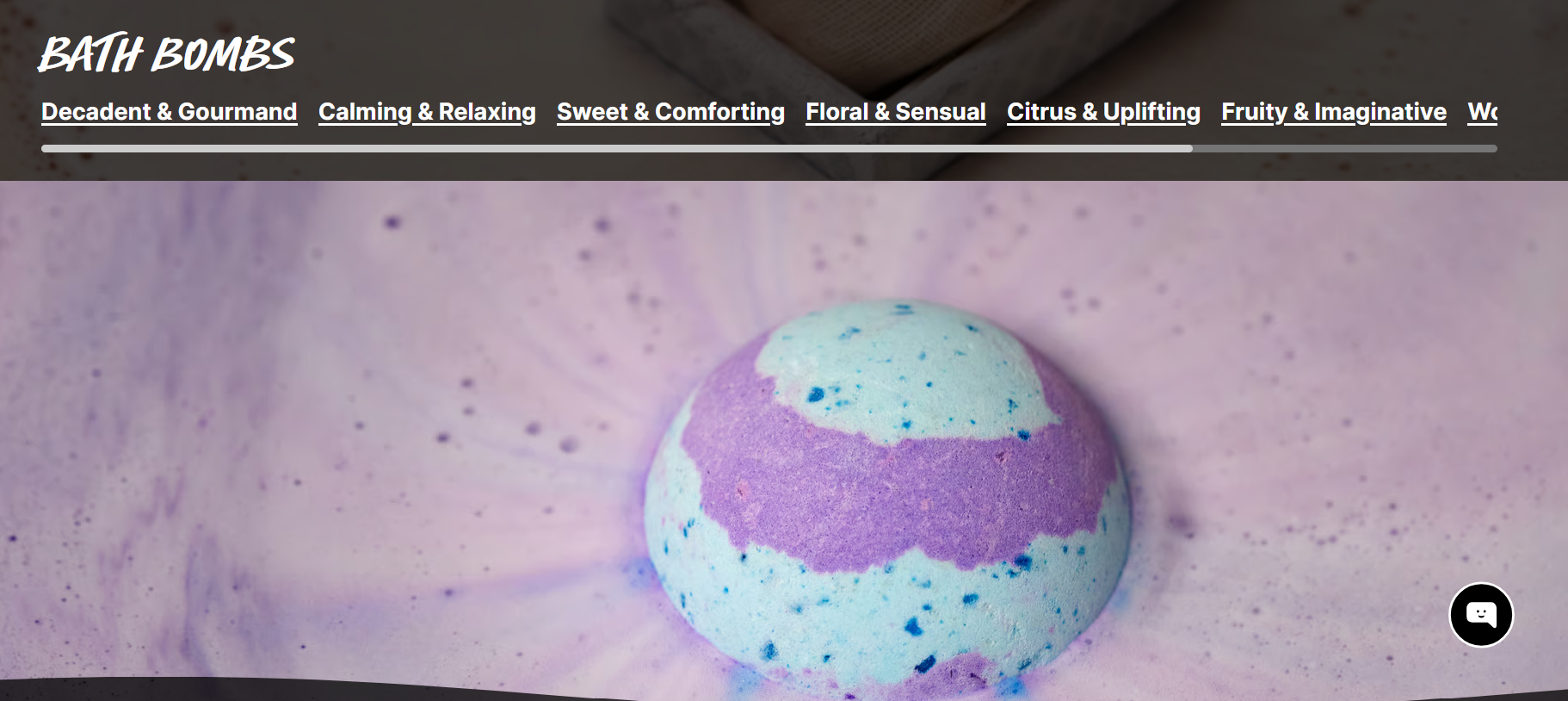
Lush uses fun product names to increase brand recall. Image via Lush
Brands with established vocabularies are easier to remember, creating a fun and exclusive customer experience.
5. Grammar and writing style
How brands use words and sentences can influence how people perceive their message. An all-caps message may appear aggressive or urgent, while a short message can avoid confusion. Brands can leverage these linguistic cues to shape their verbal identity.
For instance, Apple's straightforward language focuses on creating user-friendly tech products. It also fragments phrases to simplify ideas, leaving no room for misinterpretations.

Privacy ad for Apple via D&Ad

An ad that encapsulates the convenience that the iPhone brings. Image via Campaigns of the World
In contrast, Liquid Death reflects its rebellious nature by using slogans like "Murder Your Thirst" in all caps to command attention. This is evident in its use of violent words, but harmlessly and humorously. Liquid Death has a unique grammar and writing style that makes drinking water sound aggressively cool.
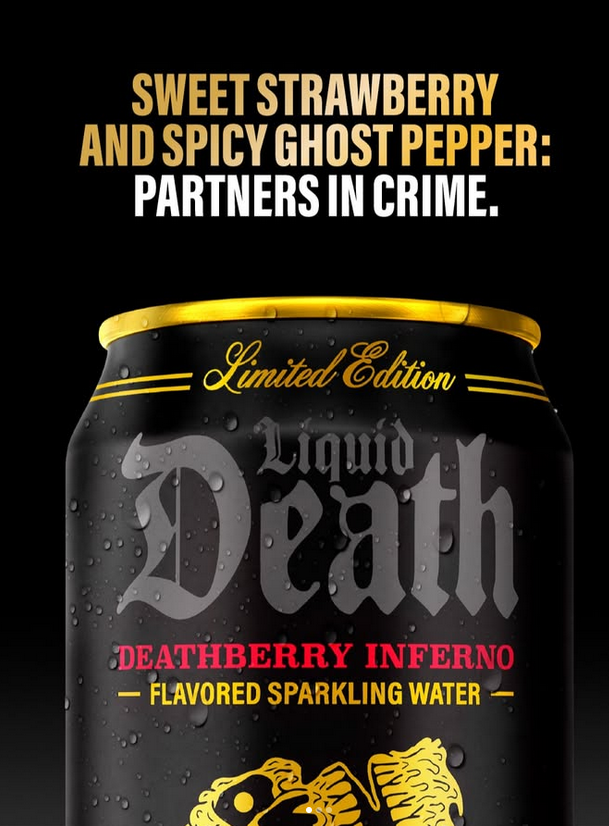
Funny and overkill work when it comes to Liquid Death’s verbal identity. Image via Instagram

Attention-grabbing product names via Liquid Death
6. Purpose and values
A verbal identity that reflects a brand's purpose and values sounds more authentic. Don't just casually say you care about something; use the correct language when making claims.
IKEA is on a mission to create products that enhance everyday life. It values simplicity and sustainability while creating fun products that cater to consumers' needs.
IKEA's verbal identity reflects its purpose and values. Instead of giving direct instructions, it uses phrases like "Some building fun ahead!" to put a positive spin on the experience. IKEA also educates consumers in-store about using recycled materials, reinforcing its commitment to sustainability.
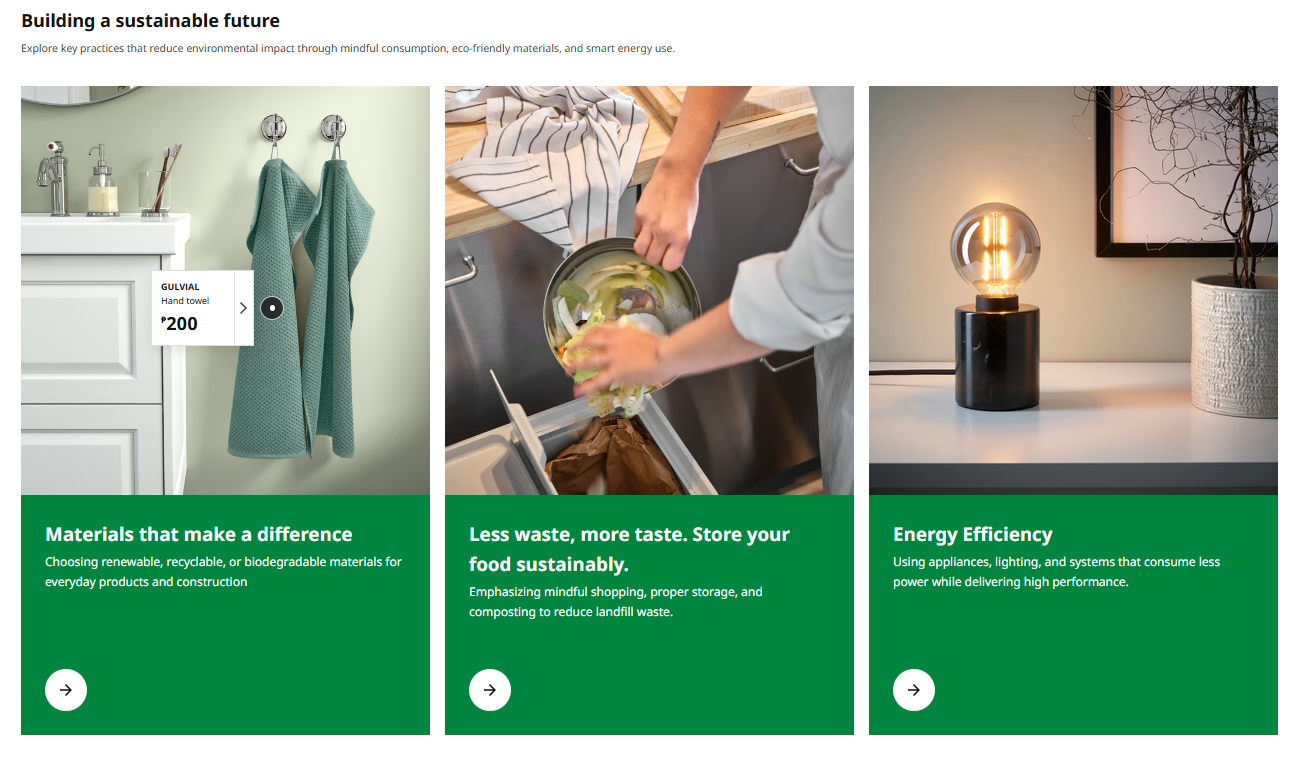
Sustainable products by IKEA
The Body Shop weaves its purpose and values into its verbal identity as an activist beauty company that makes cruelty-free products. The brand is unapologetic and empowering in its language, whether it calls attention to issues like animal testing, champions self-love, or educates on sustainable practices. This consistent alignment between its words and mission conveys authenticity in its messaging.
Verbal identities should serve as tangible proof of what brands believe and represent.
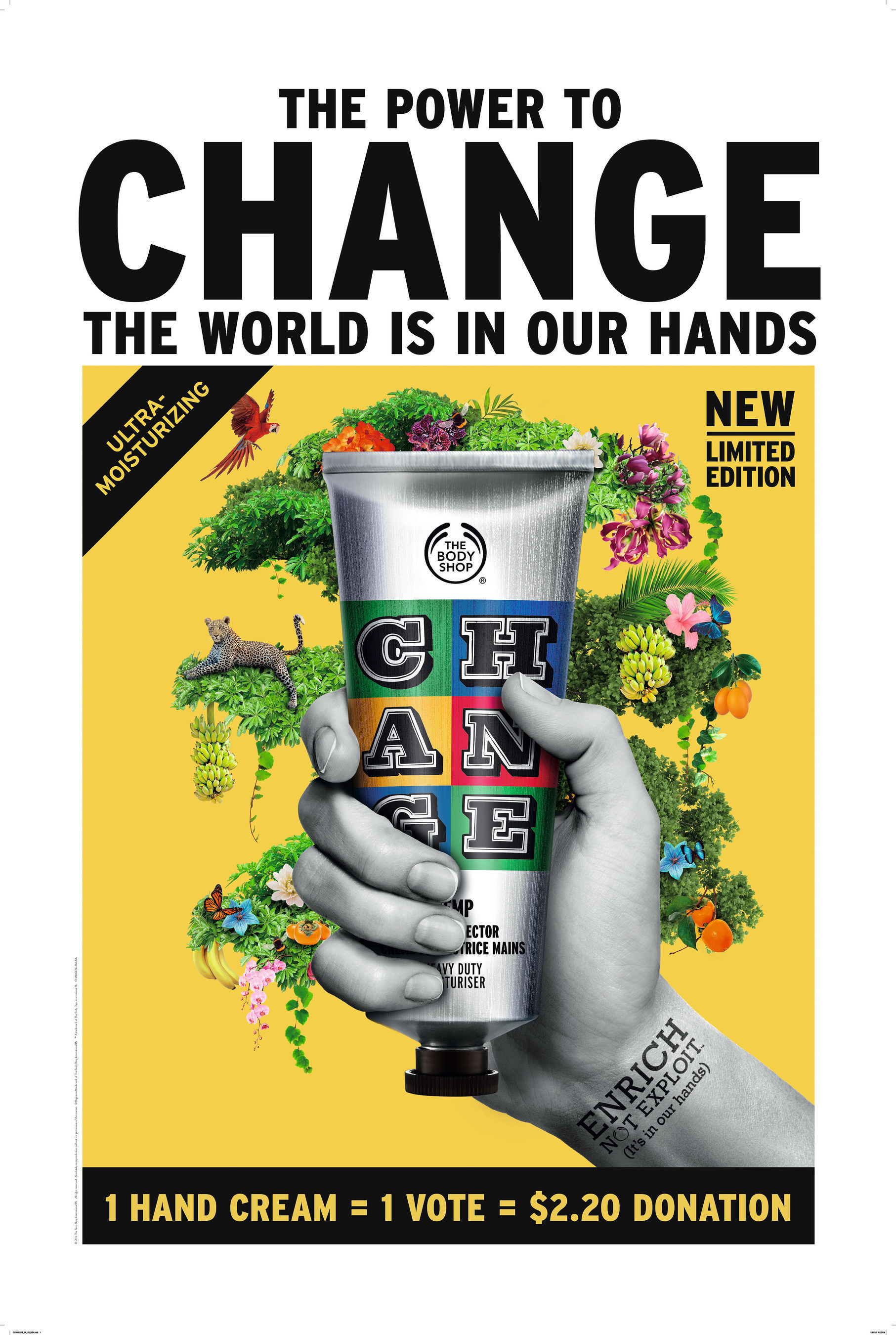
The Body Shop encourages change through its hand cream ad. Image via PR Newswire
7. Brand story
A brand story communicates your company's values and purpose through narratives your audience can relate to. It includes how brands came to be (origin story), testimonials on how brands impacted the lives of their customers and the community, behind-the-scenes with the team, and creative ads.
Think of the brand story as the soul of a verbal identity. It makes it more human and memorable. The Body Shop's story revolves around its founder, Anita Roddick, and her quest to establish a business that does good.
It has pioneered ethical practices within the beauty industry by minimizing its environmental impact and partnering with communities that source natural ingredients. The Body Shop's brand story has become the guiding component of its verbal identity, ensuring the right tone, words, and emotions are used.
Verbal Identity vs. Visual Identity: How Do They Work Together?
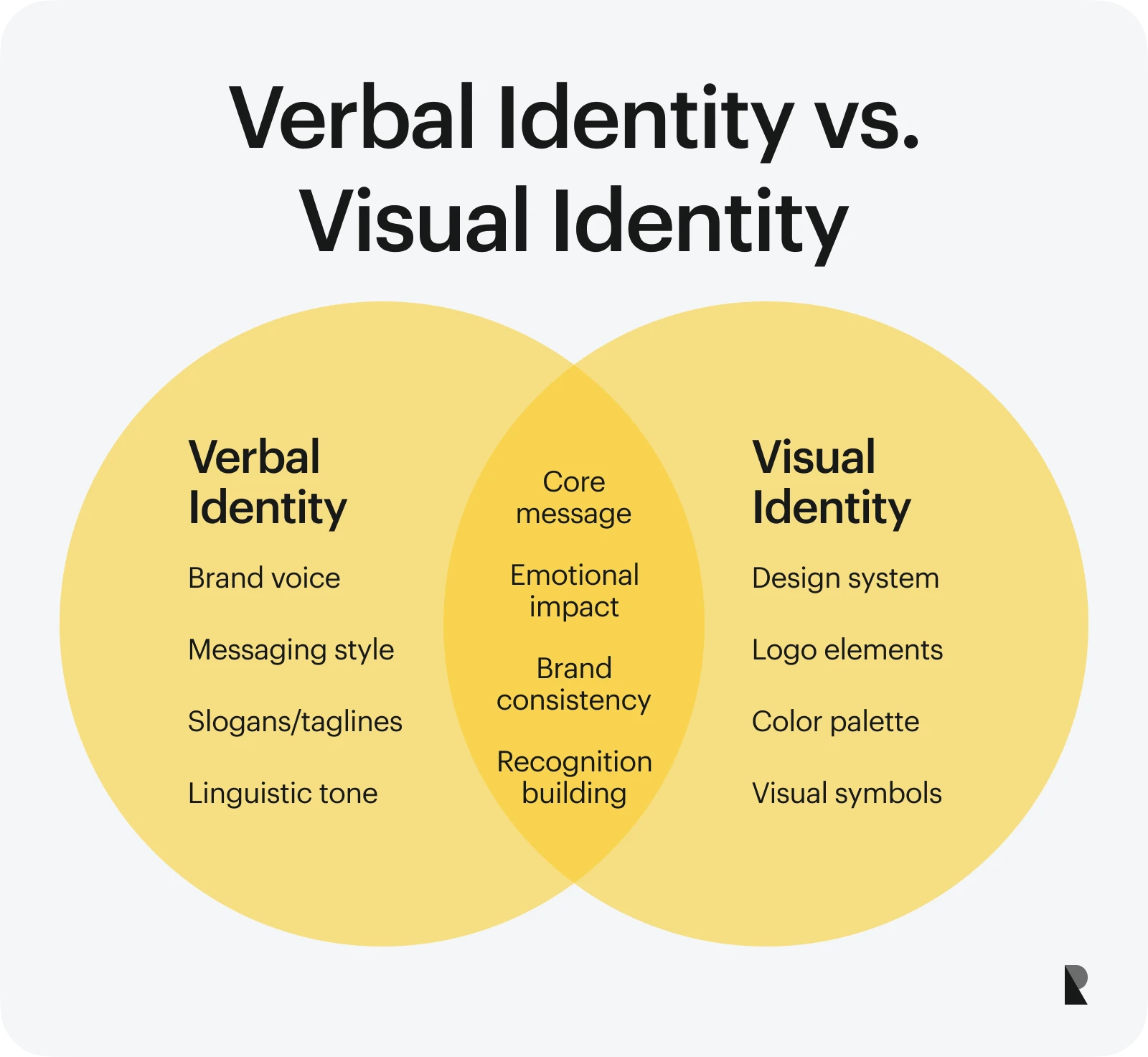
The examples of brands with well-established verbal identities discussed above show how well verbal identities complement visual identities to create cohesive experiences. Let's look at how visual and brand-verbal identities work together.
Ensures consistency in messaging
For brands' visual and verbal identities to be effective, they need to center around the same core message. If a brand's verbal identity is serene, its visual identity should reflect this through calming colors and images.
Increases emotional resonance
When matched with the right verbal messaging, a moving image can evoke stronger emotions. For instance, a photo of a person climbing a steep mountain with an energetic language that promotes adventure creates a deeper emotional connection with the audience.
Strengthens brand recognition
Well-designed visual assets, like logos, can effectively leave a lasting impression on consumers. But adding slogans can fill the gaps that logos alone may not communicate. It can be a strategic way to highlight brands' unique selling points, enhancing brand recognition and differentiation.
How to Build a Strong Verbal Identity: A Step-by-Step Framework
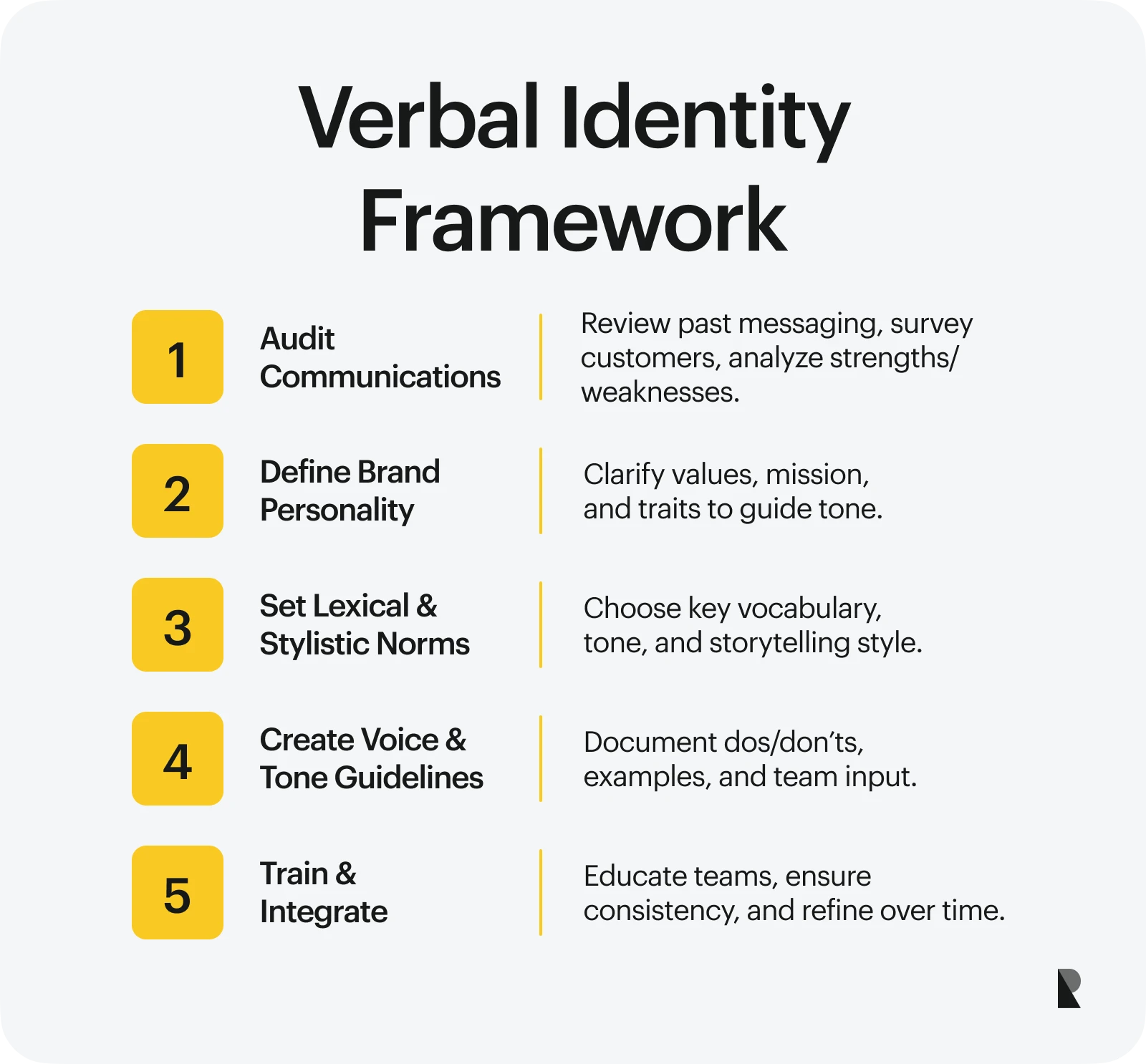
Crafting a verbal identity can vary from brand to brand, as several factors should be considered, including industry trends, target market, available resources, and competitors. However, we have gathered foundational steps to get you started.
Step 1: audit existing communications
Brand auditing involves evaluating a brand's market performance and public perception. You can achieve this by conducting surveys, tracking social media information, and analyzing sales data. It also involves reviewing past and present communication efforts on different channels to see what works and what doesn't.
Running an audit can give you a data-backed analysis of what customers like and their expectations. It explores the strengths and weaknesses of your brand. These are essential when creating a language that will resonate with them. A brand audit also helps ensure your brand messages are clear and consistent.
Step 2: identify your brand personality
When you have a defined brand personality, you can craft a verbal identity that connects emotionally. However, shaping your brand personality is not as simple as ticking off human traits on a list. It requires understanding your customers and learning what resonates with them. You must also consider your brand values, mission, and vision to determine personality traits that will help you stand out in the market.
A strong brand personality helps maintain a consistent verbal identity across all platforms, which can eventually build trust and recognition.
Step 3: choose lexical and stylistic norms
A brand lexicon is a collection of words and phrases that align with and represent your organization's values and core message. If you're running a hotel business, you may use words like "luxurious," "personalized service," "cultural experiences," and "escape" in your communication to convey your commitment to providing a unique and satisfying guest experience.
Now, how do we express this vocabulary? Enter stylistic norms or how people structure language to best connect with their audience. It's a combination of the right tone of voice, visual language—colors, typography, and imagery—and storytelling techniques that effectively convey your message.
Consider your market when choosing lexical and stylistic norms. For instance, American brands expanding to Japan may need to re-strategize and adapt emotional cues that appeal to the local audience.
Step 4: develop voice and tone guidelines
Having voice and tone guidelines can help your team communicate consistently and effectively. It includes the dos and don'ts when using words, phrases, and styles that reflect your brand's personality. These could be on-brand product names, slogans, and other messages.
As everyone uses guidelines, consider gathering input from your marketing team, design team, customer service, human resources, and other department heads to ensure the guidelines align with the company's overall mission and vision.
You should also engage with your audience and potential customers to understand the tone and language that resonates with them. This can help you identify a specific voice that can differentiate your brand.
Step 5: train teams and integrate
A successful verbal identity requires everyone, including your internal team, to speak the same language. This is especially true for team members who engage with customers, which is why training your teams is so important.
Hold orientations or training sessions to educate your team about your verbal identity. Use examples that demonstrate consistency in messaging across all forms of communication. Teach them how to use the verbal identity guide as a reference.
Finally, regularly review how effectively the verbal identity is being communicated. Survey customers, involve your team, and ask for their feedback to refine your approach. Remember, verbal identity must evolve to remain relevant and practical, just like any other aspect of branding.
Take the Next Step in Building Your Verbal Identity
Verbal identity is often forgotten in favor of visuals. But words are powerful. With a strong verbal identity, you can differentiate your brand, create meaningful customer relationships, and convey your brand values and purpose. It can also be the key for brands to unlock deeper connections and foster loyal communities.
Jun 30, 2025
